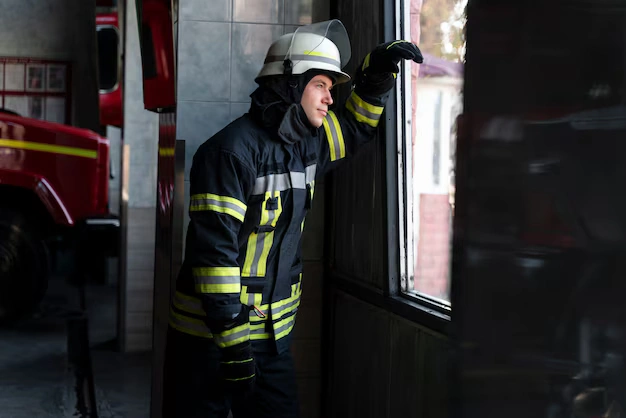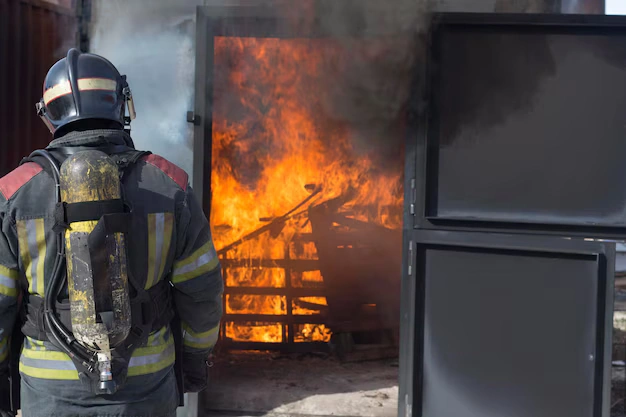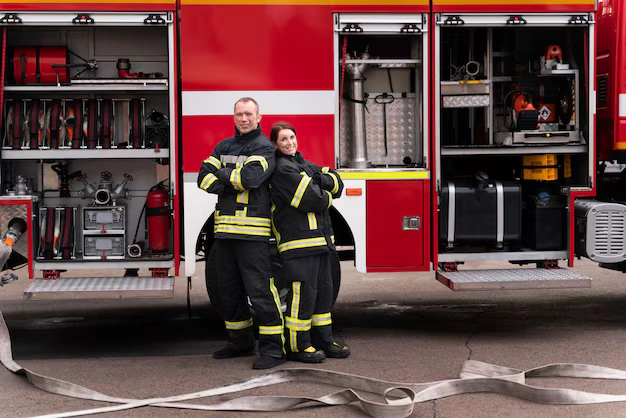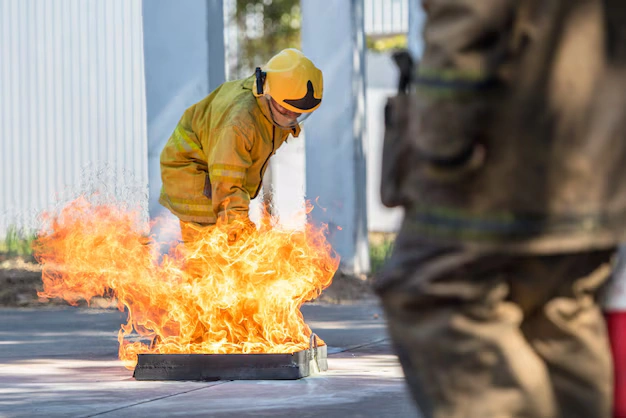Ensuring employee and visitor safety is one of the most critical objectives for any business in the UAE’s competitive business environment. With the day-to-day grind of running a successful business, don’t forget about those safety initiatives that keep people in the workplace safe. Fire safety evacuation drills are by far one of the easiest and most effective ways to secure safety. A drill like this not only prepares employees for the organization of there were an incident, but offers the organization fulfils legal obligations. Not only does such a drill help practice and prepare employees for any emergency, but it also ensures that they are meeting legal requirements.
Why Fire Safety Evacuation Drills Are Important
Fires can occur at any time, and when they do, it’s important for employees to know precisely how to respond. Panic can kick in fast, particularly if people aren’t certain of the evacuation plan or where to go. Fire drills must be conducted since staff will be able to learn firsthand what actions need to be taken in case of an emergency and do them fast but in an orderly manner, saving lives and lessening the amount of fire damage to the workplace.

So, what is the reason behind the need for fire evacuation drills in companies in the UAE?
- Life-Saving Training: The primary aim of fire drills are that every single employee knows how to get out. Drills familiarize them with evacuation routes, exits, fire safety equipment, and assembly points. In the event of an emergency, seconds can mean the difference between life and death, and knowing how to react could save you or someone you love.
- Meeting UAE Fire Safety Laws: The UAE places great emphasis on fire safety. The UAE Civil Defence, which ensures that businesses adhere to fire safety standards, requires that companies carry out fire drills on a regular basis. These drills aren’t merely recommended: They’re a legal requirement. Not doing fire drills may result in charged fines, penalties, or even closing down temporarily.
- Minimizing Property Damage: The sooner employees get out of a building, the sooner emergency responders can start fighting the fire. A timely evacuation process will therefore allow the fire service to have more time to act and limit the damage, protecting both property and assets.
- Reducing Panic and Stress: Fire drills smoothen panic. Practicing evacuation procedures before an actual emergency helps employees relay instructions calmly and confidently instead of panicking. Of course, though, this calm response ensures that the evacuation is run effectively.
- Identifying Weaknesses in Evacuation Plans: Fire drills help businesses identify flaws in their emergency plans. This could lead to bottlenecks at certain exits or communication breakdowns. Identifying these problems ahead of time gives businesses an opportunity to correct and update their plans to improve safety before a fire actually occurs.
- UAE Fire Safety Regulations
The UAE has stringent fire safety regulations that every business must comply with. The UAE Civil Defence ensures these regulations are applied with set guidelines to safety in the workplace. Here are some of the important fire safety regulations that a business should follow:
- Evacuation Plans: All businesses should develop a written fire evacuation plan. All evacuation routes, the locations of fire exit, and emergency assembly points outside the building should be included in this plan. To be effective, the plan should be shared with all employees and modified as needed over time.
- Regular Fire Drills: Employees need to be trained in fire safety at periodic intervals. Proper training prepares employees to respond appropriately to a fire and reduces hazards.
How to Run an Effective Fire Safety Evacuation Drill
Conducting a successful fire evacuation drill is a key step in guaranteeing that personnel are ready in an actual emergency. Follow these steps to run an effective fire drill:
- Develop a Fire Evacuation Plan: The initial step in organizing a fire drill is to make a clear and detailed fire evacuation plan. This plan must outline the evacuation routes, locations of fire exit, and assembly point, as well as employees who will be responsible for assisting employees during the drill. Your plan should be designed for the layout of your business.
- Inform and Train Employees: Every employee should know your fire evacuation plan. Regular fire safety training, along with printed evacuation maps and visible signs around the workplace to mark the nearest exit and the way to the assembly point, can help achieve this. Inform employees of their role during an evacuation (fire marshals, individuals who assist others, etc.).
- Schedule the Fire Drill: Have fire drills at least every six months. While informing employees that a drill will happen is necessary, keeping the timing slightly unpredictable as well will help ensure that employees treat it like a real emergency. Surprise drills are also useful for creating a sense of urgency and the stress that can accompany a real-life fire scenario.
- Conduct the Drill: Once the fire alarm has been activated, notice how employees react. Make sure they evacuate calmly, with the routes specified in the evacuation plan in accordance with the designated assembly points. Fire marshals or safety officers should be available to guide employees and to help anyone who might need additional assistance, such as people with mobility impairments.
- Evaluate the Drill: Following the drill, conduct a debrief session in which you evaluate how the drill went. Identify some of the roadblocks experienced during the drill, such as bottlenecks at exits or problems with communication. Employee feedback can also hone corollary plans, making sure they’re attainable and effective.
- Repeat the Process: A fire drill for the office should never be a one-off. Train on procedures so that employees become more familiar with them and are prepared to act in the event of an emergency. Regularly analyse the fire evacuation policy and strive for improvement based on insights from practice sessions.
Frequently Asked Questions (FAQ)
1.How often should fire evacuation drills be conducted in UAE businesses?
As per UAE laws, fire drills must be conducted a minimum of twice a year. More regular drills may be required for larger companies or those operating in higher-risk environments.
2.Who is responsible for conducting fire drills?
It will be the responsibility of the fire safety officer, health and safety manager, or fire marshal of the business. That said, it is up to upper management to organize the fire drills, provide the resources, and train employees.
3.What should be included in a fire evacuation plan?
Evacuation routes, fire exit locations, assembly points, roles of emergency personnel (e.g., fire marshals), and a communication plan alerting employees should all be included in a fire evacuation plan.
4.Can fire drills be conducted outside business hours?
Most companies conduct fire drills during business hours, but these may be scheduled outside regular hours if required. Drills conducted during business hours, however, ensure all employees practice evacuation procedures.

5.What should businesses do if an employee is injured during a fire drill?
If an injury occurs as part of a fire drill, businesses are required to follow standard workplace injury procedures. This includes a next step (1st aid; 2nd EMS notification; 3rd emergency themselves reviews a post-mortem of the incident to update the plan).

6.Are visitors required to participate in fire drills?
Most visitors don’t have to take part in the regular fire drills. However, businesses should be certain that visitors are aware of evacuation protocols and can safely exit the building in an emergency.
7. How do fire drills improve workplace safety?
The Importance of Fire Safety Drills in Facilitating a Culture of Safety in the Workplace Familiarity with evacuation procedures reduces panic in an emergency situation. It increases confidence in employees so that they are ready to effectively and calmly respond to a fire emergency.
Conclusion
Fire safety evacuation drills are an integral part of ensuring safety in any workplace in addition to complying with the laws of the UAE. Regular fire drills will also help to make sure staff know how to respond to a fire quickly and efficiently. These practices help save and protect lives and property and help businesses comply with legal obligations. A well-trained workforce is a safer workforce. By emphasizing fire safety and keeping a reliable evacuation plan up-to-date, businesses in the UAE can ensure a safer and more secure workplace for everyone.


